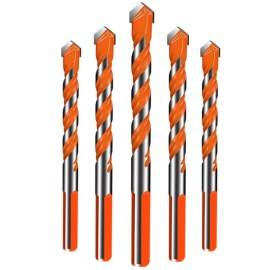- Industrial zone, South of Anping Town, Hengshui, Hebei, China.
- sales@hfpetromesh.com
- +86-18931809706
 Afrikaans
Afrikaans  Albanian
Albanian  Amharic
Amharic  Arabic
Arabic  Armenian
Armenian  Azerbaijani
Azerbaijani  Basque
Basque  Belarusian
Belarusian  Bengali
Bengali  Bosnian
Bosnian  Bulgarian
Bulgarian  Catalan
Catalan  Cebuano
Cebuano  Corsican
Corsican  Croatian
Croatian  Czech
Czech  Danish
Danish  Dutch
Dutch  English
English  Esperanto
Esperanto  Estonian
Estonian  Finnish
Finnish  French
French  Frisian
Frisian  Galician
Galician  Georgian
Georgian  German
German  Greek
Greek  Gujarati
Gujarati  Haitian Creole
Haitian Creole  hausa
hausa  hawaiian
hawaiian  Hebrew
Hebrew  Hindi
Hindi  Miao
Miao  Hungarian
Hungarian  Icelandic
Icelandic  igbo
igbo  Indonesian
Indonesian  irish
irish  Italian
Italian  Japanese
Japanese  Javanese
Javanese  Kannada
Kannada  kazakh
kazakh  Khmer
Khmer  Rwandese
Rwandese  Korean
Korean  Kurdish
Kurdish  Kyrgyz
Kyrgyz  Lao
Lao  Latin
Latin  Latvian
Latvian  Lithuanian
Lithuanian  Luxembourgish
Luxembourgish  Macedonian
Macedonian  Malgashi
Malgashi  Malay
Malay  Malayalam
Malayalam  Maltese
Maltese  Maori
Maori  Marathi
Marathi  Mongolian
Mongolian  Myanmar
Myanmar  Nepali
Nepali  Norwegian
Norwegian  Norwegian
Norwegian  Occitan
Occitan  Pashto
Pashto  Persian
Persian  Polish
Polish  Portuguese
Portuguese  Punjabi
Punjabi  Romanian
Romanian  Russian
Russian  Samoan
Samoan  Scottish Gaelic
Scottish Gaelic  Serbian
Serbian  Sesotho
Sesotho  Shona
Shona  Sindhi
Sindhi  Sinhala
Sinhala  Slovak
Slovak  Slovenian
Slovenian  Somali
Somali  Spanish
Spanish  Sundanese
Sundanese  Swahili
Swahili  Swedish
Swedish  Tagalog
Tagalog  Tajik
Tajik  Tamil
Tamil  Tatar
Tatar  Telugu
Telugu  Thai
Thai  Turkish
Turkish  Turkmen
Turkmen  Ukrainian
Ukrainian  Urdu
Urdu  Uighur
Uighur  Uzbek
Uzbek  Vietnamese
Vietnamese  Welsh
Welsh  Bantu
Bantu  Yiddish
Yiddish  Yoruba
Yoruba  Zulu
Zulu
- Afrikaans
- Albanian
- Amharic
- Arabic
- Armenian
- Azerbaijani
- Basque
- Belarusian
- Bengali
- Bosnian
- Bulgarian
- Catalan
- Cebuano
- Corsican
- Croatian
- Czech
- Danish
- Dutch
- English
- Esperanto
- Estonian
- Finnish
- French
- Frisian
- Galician
- Georgian
- German
- Greek
- Gujarati
- Haitian Creole
- hausa
- hawaiian
- Hebrew
- Hindi
- Miao
- Hungarian
- Icelandic
- igbo
- Indonesian
- irish
- Italian
- Japanese
- Javanese
- Kannada
- kazakh
- Khmer
- Rwandese
- Korean
- Kurdish
- Kyrgyz
- Lao
- Latin
- Latvian
- Lithuanian
- Luxembourgish
- Macedonian
- Malgashi
- Malay
- Malayalam
- Maltese
- Maori
- Marathi
- Mongolian
- Myanmar
- Nepali
- Norwegian
- Norwegian
- Occitan
- Pashto
- Persian
- Polish
- Portuguese
- Punjabi
- Romanian
- Russian
- Samoan
- Scottish Gaelic
- Serbian
- Sesotho
- Shona
- Sindhi
- Sinhala
- Slovak
- Slovenian
- Somali
- Spanish
- Sundanese
- Swahili
- Swedish
- Tagalog
- Tajik
- Tamil
- Tatar
- Telugu
- Thai
- Turkish
- Turkmen
- Ukrainian
- Urdu
- Uighur
- Uzbek
- Vietnamese
- Welsh
- Bantu
- Yiddish
- Yoruba
- Zulu
Feb . 03, 2025 05:33
Back to list
Perimeter Safety Netting
The term safety net often conjures images of protective measures or systems designed to catch individuals or institutions when they fall. In a product context, understanding what a safety net means is crucial for companies aiming to enhance user experience, establish brand authority, and build consumer trust. This article delves into the concept of a safety net within the product domain, exploring its nuances, significance, and impact on consumers through an expert lens.
Trustworthiness is intrinsically linked to a company's transparency and consistency in delivering on its promises. A robust product safety net assures customers that the company stands behind its products and is committed to rectifying any issues that may arise post-purchase. Consider a software company offering a no-questions-asked refund policy or guaranteed data protection measures. These assurances build trust by alleviating the fears of potential post-purchase regret or security concerns, essential in fostering long-term customer loyalty. To illustrate the impact of a product safety net, let's examine the consumer electronics industry. Manufacturers such as Apple have masterfully embedded safety nets within their ecosystems. The AppleCare service, for example, extends hardware repair coverage and protection against accidental damage. This comprehensive support network assures consumers that their investment is safeguarded, thus reinforcing brand loyalty and encouraging repeat purchases. In addition to tangible benefits, safety nets also serve as a strategic tool in driving innovation and differentiation. By investing in robust safety nets, companies not only protect their customers but also differentiate their offerings in crowded markets. Unique safety features can become unique selling points, drawing attention and interest in markets saturated with similar products. Moreover, as consumers become increasingly discerning, the presence of a safety net can influence purchasing decisions. A study by CSO Insights revealed that 53% of buyers are more inclined to purchase a product when the company offers satisfactory post-sale support and warranties—an indication of the increasing value placed on comprehensive safety nets. In conclusion, the concept of a safety net in product development transcends mere protective measures; it represents a strategic element that enhances user experience, asserts brand authority, and cultivates consumer trust. Expertly crafted, these safety nets not only safeguard investments but also foster brand differentiation and customer loyalty. As markets evolve, the importance of robust safety nets will undoubtedly continue to grow, playing a critical role in shaping consumer perceptions and driving business success.


Trustworthiness is intrinsically linked to a company's transparency and consistency in delivering on its promises. A robust product safety net assures customers that the company stands behind its products and is committed to rectifying any issues that may arise post-purchase. Consider a software company offering a no-questions-asked refund policy or guaranteed data protection measures. These assurances build trust by alleviating the fears of potential post-purchase regret or security concerns, essential in fostering long-term customer loyalty. To illustrate the impact of a product safety net, let's examine the consumer electronics industry. Manufacturers such as Apple have masterfully embedded safety nets within their ecosystems. The AppleCare service, for example, extends hardware repair coverage and protection against accidental damage. This comprehensive support network assures consumers that their investment is safeguarded, thus reinforcing brand loyalty and encouraging repeat purchases. In addition to tangible benefits, safety nets also serve as a strategic tool in driving innovation and differentiation. By investing in robust safety nets, companies not only protect their customers but also differentiate their offerings in crowded markets. Unique safety features can become unique selling points, drawing attention and interest in markets saturated with similar products. Moreover, as consumers become increasingly discerning, the presence of a safety net can influence purchasing decisions. A study by CSO Insights revealed that 53% of buyers are more inclined to purchase a product when the company offers satisfactory post-sale support and warranties—an indication of the increasing value placed on comprehensive safety nets. In conclusion, the concept of a safety net in product development transcends mere protective measures; it represents a strategic element that enhances user experience, asserts brand authority, and cultivates consumer trust. Expertly crafted, these safety nets not only safeguard investments but also foster brand differentiation and customer loyalty. As markets evolve, the importance of robust safety nets will undoubtedly continue to grow, playing a critical role in shaping consumer perceptions and driving business success.
Share
Prev:
Next:
Latest news
-
Welded Steel Bar Grating: The Rugged Industrial Flooring Solution Built for Load and LongevityNewsJun.24,2025
-
Steel Walkway Grating: Reliable, Resilient, and Built for Every StepNewsJun.24,2025
-
Shale Shaker Screen for Sale: Optimize Drilling Efficiency with Precision Screening PowerNewsJun.24,2025
-
Shaker Screen for Sale: Elevate Your Drilling Efficiency with Durable Separation SolutionsNewsJun.24,2025
-
Press Locked Steel Grating: Industrial Strength with Precision Fit for Heavy-Duty ApplicationsNewsJun.24,2025
-
Perimeter Safety Netting: The Critical Safety Upgrade for Every HelipadNewsJun.24,2025